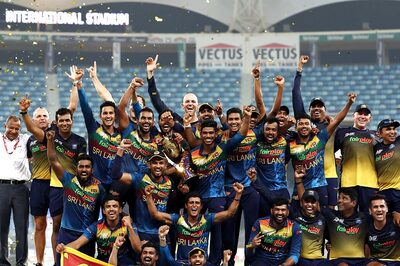
views
Over the last decade, India has witnessed a revolution in the way music is heard. With a growing tribe of audiophiles who won't settle for anything less when it comes to experiencing music, high-resolution audio (HRA) is emerging as the first choice for them, a top executive from US-based audio electronics company JBL by Harman has said.
As we shift from records, cassettes, CDs/DVDs and MP3 to live streaming where convenience takes precedence over fidelity, the content as envisaged by the artist is diluted, nuances are lost and the overall experience is mediocre.
Here is where HRA comes as a saviour. It is an audio format that has a sampling rate of 96 KHz/24 bit and can reproduce very close to the original sound as recorded in a studio or a concert hall.
"Quality and durability drive the Indian audio market. Audiophiles who are passionate about the quality of sound will go an extra mile and spend an extra penny on a good quality audio product. This audience understands the technology behind audio products and equipment," Prashant Govindan, Senior Director, Harman Professional, India Operations, Engineering/R&D, told IANS in an email interview.
As a key player in Harman's extensive portfolio of legendary brands, JBL contributed to an overall sales increase of 18 per cent in India for the entire lifestyle audio division in the 2016 fiscal year.
For Harman's lifestyle audio division, fiscal 2016 operating income increased 36 percent to $267 million from $196 million (On a GAAP basis) in the country as compared to 2015.
According to Govindan, it is essential for consumers to understand how the difference in fidelity and overall quality is immediately discernable when the same content is played back in high-resolution audio equipment.
"The consumers who have been exposed to the difference in quality immediately appreciate the better quality," Govindan told IANS.
With high-resolution audio, listeners can experience fine details of audio like subtlety and depth.
Better frequency sampling rate and high bit rate makes the playback audio very close to the original audio track -- which a CD recording cannot capture. Popular formats for storing high-resolution audio are FLAC, ALAC, WAV, AIFF and DSD.
Sampling rate means the number of times samples are taken per second during the conversion of analog sound waves to digital. Thus, a precise audio signal can be produced with more bits like 24-bit in high-resolution audio.
"We have observed mass-market heavyweights bring HRA to a larger audience so that people are able to understand what high-resolution audio is and the benefits it can bring to music. The future of HRA certainly looks bright and promising and is fast becoming a hot and trending topic in India as well," Govindan stressed.
While most streaming providers have a paid premium 'high-resolution' option, the content is still lacking in terms of overall fidelity and tonal quality.
For a more accurate and fulfilling experience, music needs to be recorded at the highest sampling rate possible (preferably 96KHz and above) and stored in a lossless format that does not compress and take away the fidelity (WAV, ALAC or FLAC).
High-resolution audio tends to reveal every music nuance with fine integrity -- from deep sub-bass lows to crystalline highs -- bringing listeners closer to the original performance.
"We will continue to push audio boundaries through innovative, connected and personalised sound technology to the benefit of consumers worldwide," Govindan added.



















Comments
0 comment